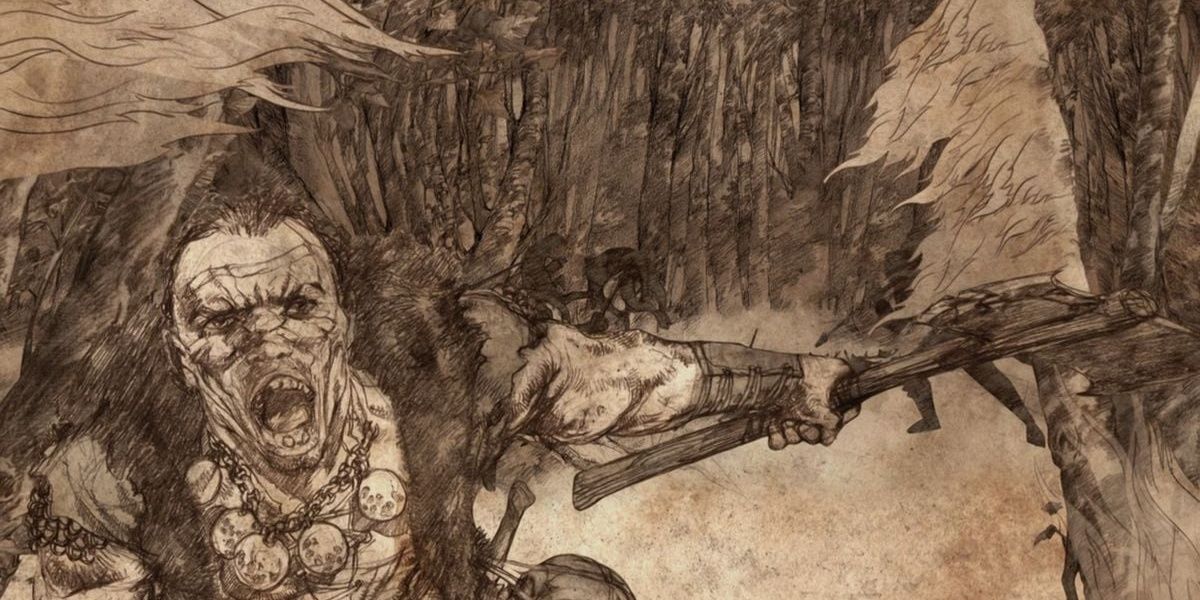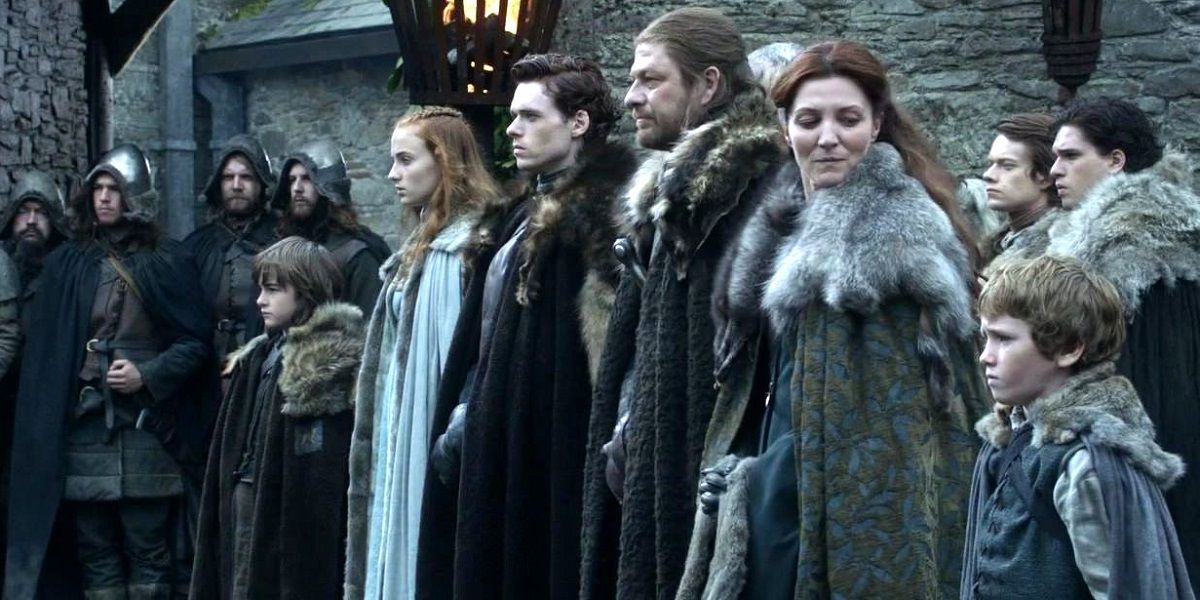Many Game of Thrones fans see the North as the most compelling chunk of the franchise. Their harsh, bold, survivalist lifestyle and commitment to ancient traditions help them stand out. Part of the reason they feel so unique is that their culture arose under different circumstances. The Northmen live with the background of the First Men. The rest of Westeros changed when an invading ethnic group called the Andals conquered the continent.
Westeros is one of the most fascinating fantasy settings. Its geographical diversity allows for varied and engaging settings. Its enormous economic inequality ensures a massive spread of lifestyles. While the show and books spend most of their time on the aristocrats and monarchs vying for power, the land, its people, and their history remain endlessly compelling.
When did the Andals invade?
The first Andals reached Westeros in 5700 BC. Humans first landed on the continent over 6000 years earlier. The First Men crossed a land bridge called the Arm of Dorne and entered a 2000-year war with the local indigenous species. Cooler heads prevailed, resulting in a Pact that kicked off the Age of Heroes. This culminated in the Long Night and the War of the Dawn. All living things in Westeros had to struggle against the White Walkers for the fate of humanity. Humans won the battle, pushing the White Walkers behind the Wall and re-establishing some peace in Westeros for over 2000 years. That pleasant era ended when the Andals attacked.
The Andals were known for their height and their beautiful fair hair. Their original homeland was Andalos, a chunk of the western coast of Essos across the Narrow Sea. The Andals have an internal mythology that motivated them to attack Westeros. It is said that a deity called the Seven-Faced God or The Seven appeared to the Andals in the rolling hills of their homeland. The Seven is named for its aspects, each representing an aspect of life. Andals adopted the Faith of the Seven and began zealously enforcing its dominance. Many carved the symbol of their faith into their forehead. The Andals took up their weapons and set sail to Westeros to stomp out non-believers and establish their religion as the only valid option. Their crusade lasted hundreds of years and cost countless lives, but they eventually succeeded across most of the continent. The faith remained critical to the kingdoms long after the Andal Invasion. George R. R. Martin summarized its place on the Iron Throne like this:
Even Aegon tread lightly where the Faith was concerned ... it was his son Maegor who broke their power, but even then the Faith came back under kings like Baelor the Blessed.
Why did the Andals win?
The most prominent reason the Andals bested the First Men is technology. The First Men wielded bronze weapons, while the Andals introduced iron and steel. This simple logistical edge guaranteed the Andals victory in almost every confrontation. Bronze is a much weaker metal than steel, leading many confrontations to end with the First Man's blade snapping as the Andals' swords remained firm. In addition, the First Men of Westeros were divided into countless small kingdoms, while the Andals were united in their faith. The Andals introduced the concept of "knighthood," which allowed elite armored warriors to wreak havoc on unprepared local soldiers. If the First Men banded together, they might have repelled the invaders. Unfortunately, the Andals were able to destroy each small army below the Neck and the North.
The Andals arrived in the Fingers, which would come to be known as the Vale of Arryn. According to legend, Andal hero Ser Artys "The Winged Knight" Arryn rode a giant falcon to defeat the local Griffin King and conquer the Vale. The Vale became the Andal's base of operations. From there, the Andals came in waves and spread across the continent. They wiped out the Children of the Forest and dominated every small nation they encountered. They forced all they captured to convert to the Faith of the Seven. Only the Neck and the North resisted the Andals. They reached the swampland of the Neck, where only one road allowed safe passage, and failed to overcome the local Crannogmen's clever tactics. Stymied by the swamp-folks, the Andals settled on dominating the rest of Westeros.
What inspired the Andal Invasion?
George R. R. Martin based the Andal Invasion on the historical War of the Roses in 15th-century England. The Andals were named partially for the Vandals, the barbarian tribes who attacked Rome along with the Anglo-Saxons. The North represents the Scots, who repelled the Anglo-Saxons and maintained their culture. It's far from a perfect copy, but Martin acknowledges his historical inspirations in his fiction.
The Andal Invasion was the moment Westeros took its current ethnic shape. It would be thousands of years before Aegon the Conquerer established the kingdoms fans know today, but the first Andals laid the groundwork. It's a fascinating period of Westerosi history that demonstrates that societal trends and forces always move individual leaders and warriors. The Andals won through their advanced weapons and their enemy's refusal to work together. Whether their victory was to be celebrated remains to be seen.







